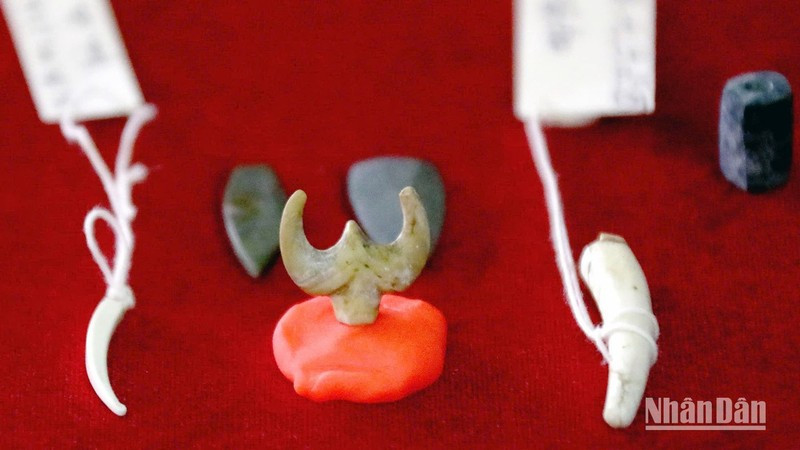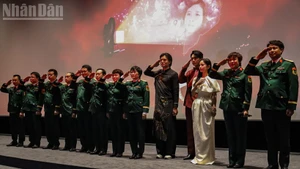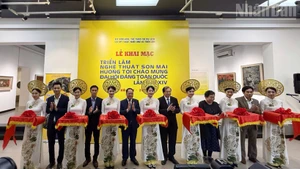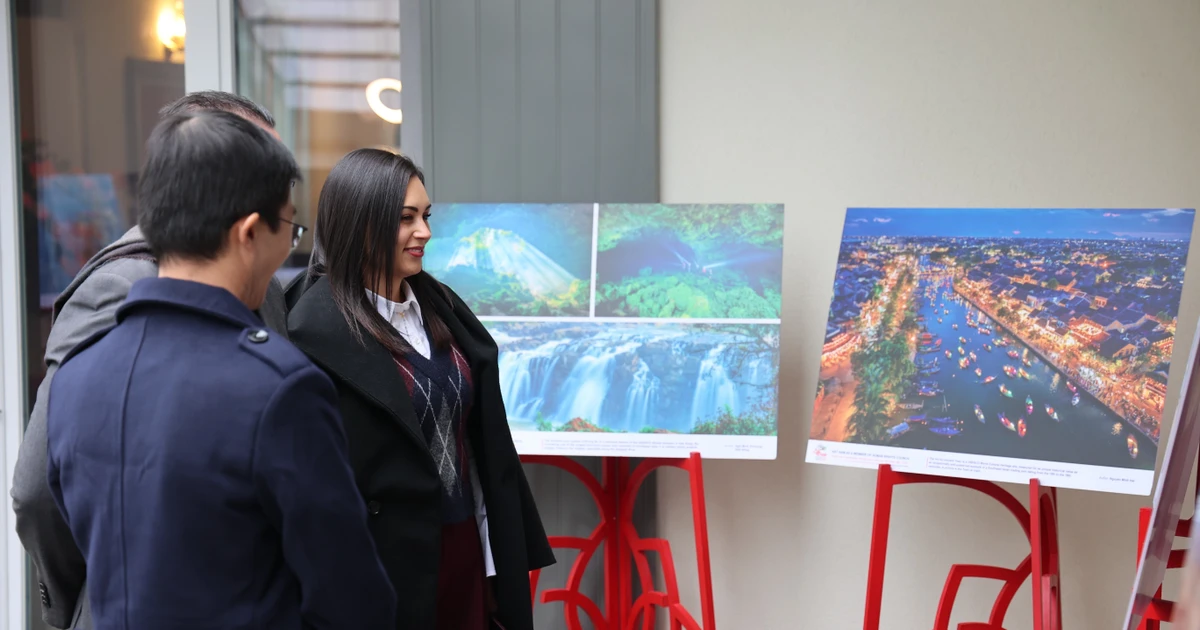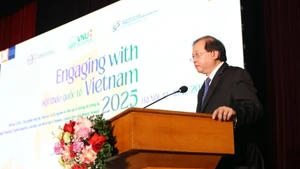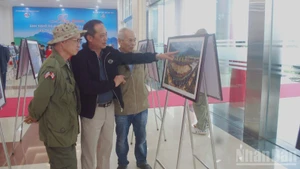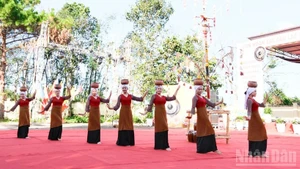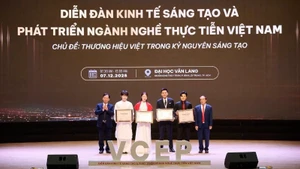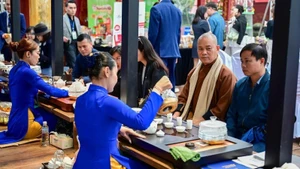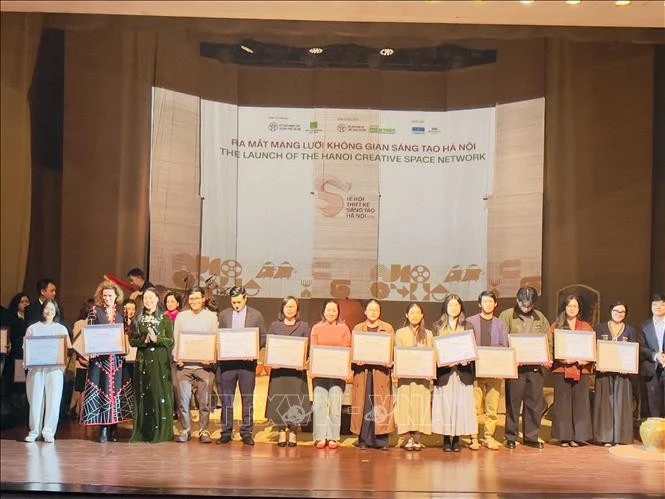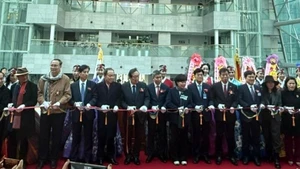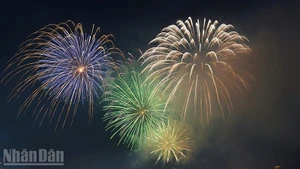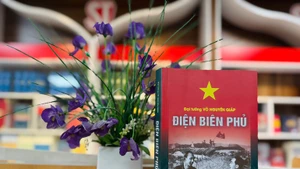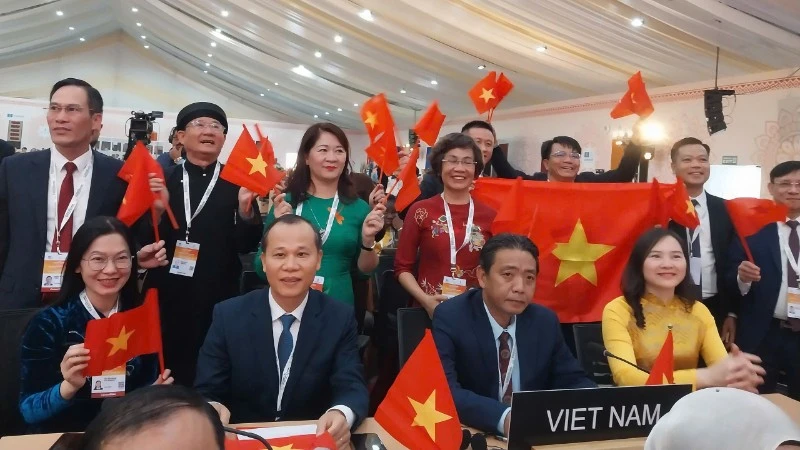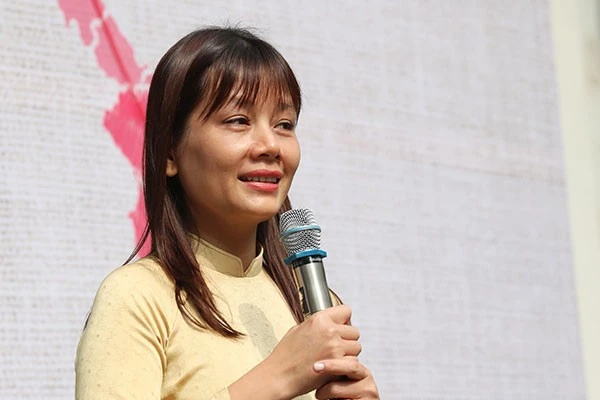Multiple cultural layers
Located in the midst of what was previously an area for growing guava and bananas, and now a construction site for an urban development project and a ring road project, the Vuon Chuoi archaeological site contains invaluable and unique treasures with four cultural layers: Phung Nguyen, Dong Dau, Go Mun and Dong Son, along with thousands of artefacts and fragments of various materials, from stone and bronze to pottery, bamboo, wood, and even jade, comprising various types from weapons, labour tools, production tools, household implements to jewellery.
The relics and artefacts collected during numerous excavations have provided an initial overview of human life and society through various historical periods at Vuon Chuoi.
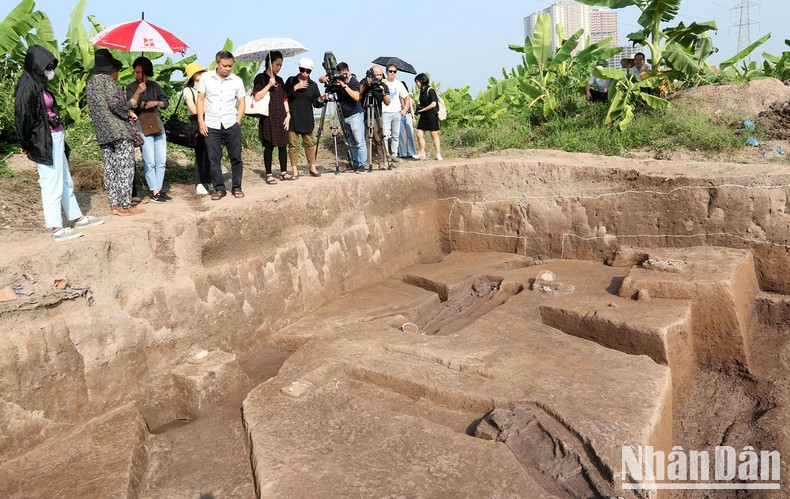 |
| Tombs excavated at Vuon Chuoi. |
The preliminary report on the archaeological survey and excavation results of Vuon Chuoi by experts from the Institute of Archaeology indicates that Vuon Chuoi has the notable characteristic of being a residential archaeological site.
In the excavation pits, scientists have discovered traces and artefacts from the Go Mun and Dong Dau periods, as well as pottery fragments from the Dong Son cultural period. Excavations to date have uncovered many relics related to the daily lives of people from the pre-Dong Son to Dong Son periods.
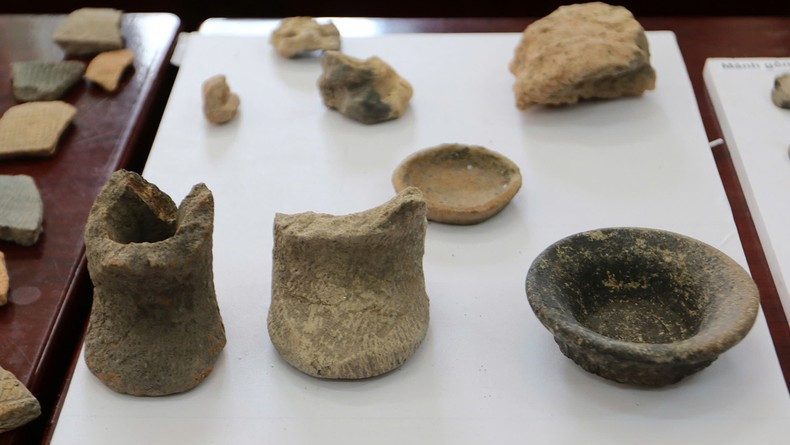 |
| Pottery leg artefacts. |
Many types of residential activity relics such as cooking hearths, traces of bronze smelting furnaces, black soil pits, post holes, traces of courtyards or architectural foundations... belonging to various cultural periods from pre-Dong Son to Dong Son have been discovered here.
The artefacts in the stratigraphic layers show direct development from Go Mun to Dong Son at Vuon Chuoi.
The large-scale excavation at the end of 2023 revealed more important traces of the two Dong Son and Phung Nguyen periods, showing that this area preserves up to four of Viet Nam’s most brilliant cultural periods from ancient times.
The excavations have also revealed unique and valuable artefacts for outlining the historical periods in this area.
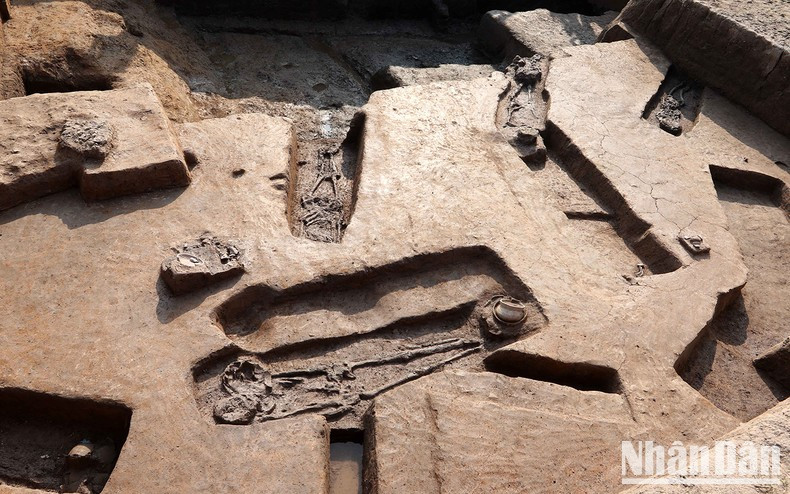 |
| Skeletal remains discovered at Vuon Chuoi. |
First, there are more than 100 burial tombs from the Dong Son and pre-Dong Son periods. These tombs all contain remains and burial goods, showing social stratification and the position of the buried individuals in each historical period.
Additionally, according to Professor Lam My Dung from the University of Social Sciences and Humanities, VNU Ha Noi, who has excavated the Vuon Chuoi site multiple times, the skeletal remains system in tombs from different periods is still quite well preserved, promising to provide deeper understanding when studying anthropology and customs of ancient residents. Through in-depth research of the remains, knowledge about the genes of pre-Dong Son people can be obtained to find connections with the genes of present-day Vietnamese people.
Furthermore, burial customs, interdisciplinary research on living environments, nutrition, health, pathology, and more can be studied to gain a clearer view of ancient people.
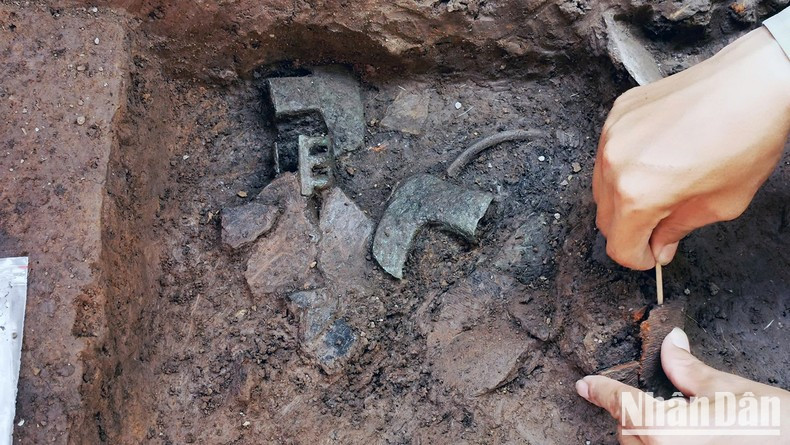 |
| Deep within the earth are artefacts dating back thousands of years. |
Besides this, there are thousands of artefacts made from stone, bronze, pottery, iron, animal bones, and various shell fragments, along with many traces related to the life and social activities of people from that time, such as cooking hearths, traces of bronze smelting furnaces, black soil pits, post holes, traces of courtyards or architectural foundations...
The artefacts and relics discovered here show that the ancient residents had mastered and developed to a very high level various crafts such as stone crafting, pottery making, woodworking, bronze casting and smelting, spinning and weaving...
Traces of rice husks imprinted on some pottery fragments and fired clay provide information about rice cultivation. Fragments of buffalo, cow and pig bones tell us about animal husbandry based on rice agriculture by the Vuon Chuoi residents.
Fishing is reflected through clay net sinkers and bronze fishhooks. The exploitation of forest products is shown through bamboo and wood pieces... which were crafted into tools and have been preserved until now thanks to the mud layer at the bottom of ponds.
Invaluable treasures
Having an archaeological site with four cultural periods like this is extremely rare for many countries around the world. Associate Professor Tong Trung Tin, President of the Viet Nam Archaeology Association, has evaluated the Vuon Chuoi archaeological site as unique and unprecedented.
Professor Lam My Dung, who is extremely dedicated and always concerned about Vuon Chuoi, believes that Vuon Chuoi exemplifies how we have tried to preserve and have successfully preserved a valuable site, despite the current strong urbanisation. Preserving Vuon Chuoi also means preserving an invaluable asset for Ha Noi in the future.
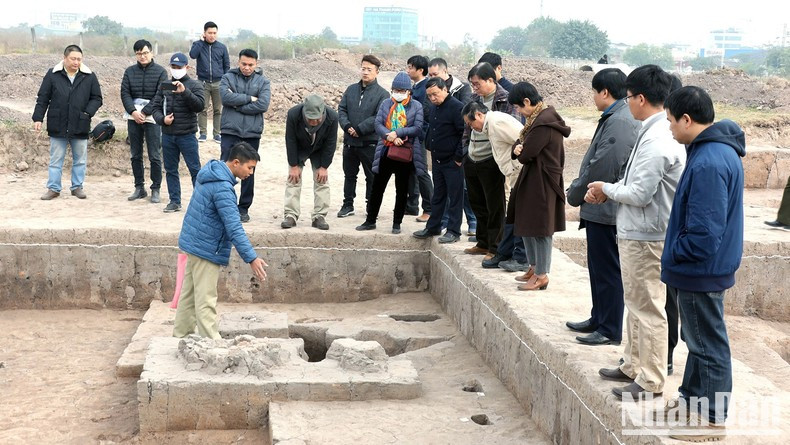 |
| Leading scientists at an excavation pit in Vuon Chuoi. |
Dr Nguyen Ngoc Quy from the Institute of Archaeology, who has directly participated in excavations for many years, states that Vuon Chuoi is a unique, invaluable archaeological site with four cultural layers and thousands of artefacts and relics, helping people today somewhat envision the social life of our ancestors thousands of years ago.
“This archaeological site enhances the value of any locality that possesses it. If an archaeological park were built here, both to preserve and maintain the heritage within the earth, and to allow the public to see the values of this archaeological site, this would not only be an attractive destination but would also enhance the value of the entire urban area and city, because not every place in the world possesses an archaeological site dating back 3,000 years and spanning four cultural periods like Vuon Chuoi,” shared Dr Nguyen Ngoc Quy.
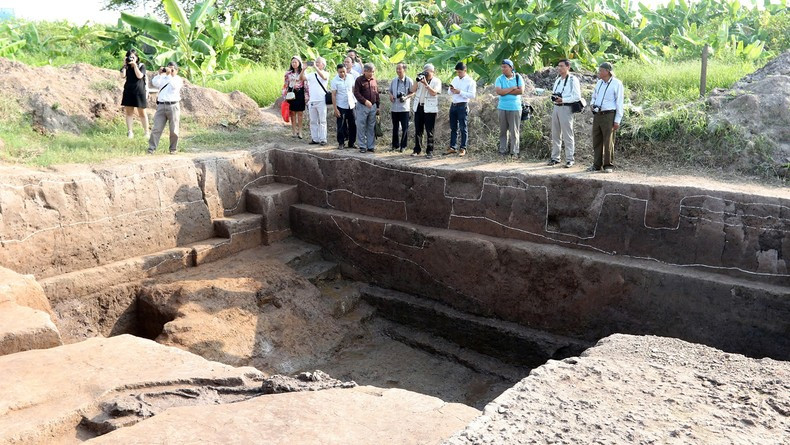 |
| Cultural layers revealed in the excavation pit. |
Therefore, the proposal by the Ha Noi Department of Culture and Sports to classify the Vuon Chuoi archaeological site as a national heritage site is the “sweet fruit” that scientists, heritage-loving residents of Lai Xa Village, Kim Chung Commune, have long been waiting for.
